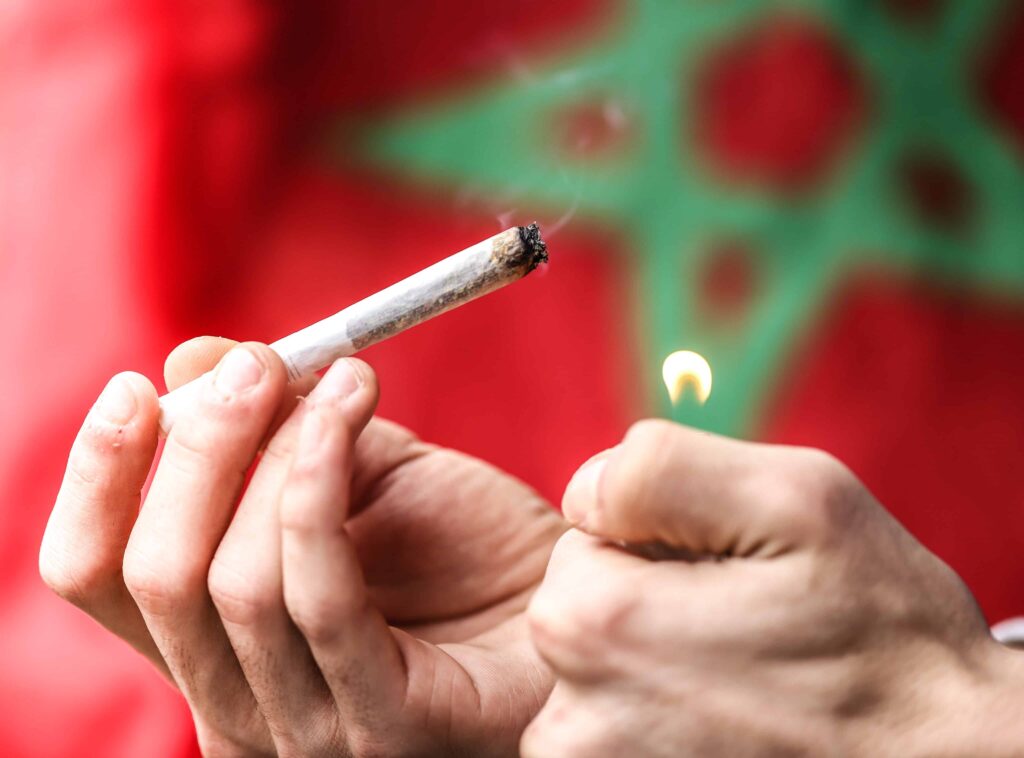
Mohamed El Guerrouj, who has been serving as the interim director for the Morocco National Agency for Regulating Cannabis Related Activities (ANRAC) general since September 2022, recently was granted the title of general director by Moroccan King Mohammed VI.
According to Morocco World News, the announcement was made on Oct. 19 between King Mohammed VI and a council of ministers meeting to discuss the Morocco 2024 Finance Bill, as well as international agreements, and appointments to official positions.
El Guerrouj has had a lengthy career prior to his most recent cannabis appointment with plenty of experience in agriculture and development, according to Morocco World News. He graduated from the Hassan II Institute of Agronomy and Veterinary Medicine in Rabat, located on the northwestern coast of Morocco, as well as the National Institute of Agronomy in Paris-Grignon, France.
In 1991, he served as the deputy director the technical department at a corporation called SOGETA, and moved on to positions as: the Ministry of Agriculture (1994), Head of the Cereals Department at the Central Directorate of Plant Production (1995), Provincial Director of Agriculture (2005), Head of the International Cooperation Division (2007), Chief of the Cabinet of the Minister of General and Economic Affairs (also in 2007), Director of Project Management at the Agency for Agricultural Development (2009), Director-General of the Agency for Agricultural Development (2013), governor of El Jadida (2017), and interim director of ANRAC (as of September 2022).
Now he’s poised to lead ANRAC into the future. Moroccan Parliament initially voted to legalize medical cannabis through Law 13-21 in 2021 legalize cannabis for industrial, medical, and cosmetic purposes.
ANRAC was established in 2022 to regulate all aspects of Morocco’s cannabis industry, including cultivation, certifications/licensing, marketing, processing, and manufacturing. ANRAC held its first meeting in June 2022.
By October 2022, ANRAC issued the first 10 cannabis production permits, as well as authorized companies to “market and export cannabis derivatives for pharmaceutical, medical, and industrial purposes.” In doing so, the agency allows cannabis cultivation and processing to be done through agricultural collectives.
In December 2022, Moroccan law enforcement dismantled a drug trafficking operation and found more than two tons of illegal cannabis. In 2021, law enforcement seized more than 191 tons of cannabis, which reflected a decrease in seizure amounts compared to that of 2020.
In March of this year, Morocco officials announced that it would begin building its first testing lab, called Bio Cannat. It was one of the 10 original businesses to receive a permit from ANRAC, according to Morocco World News.
Morocco has a long-standing history of cannabis cultivation and hashish production, especially in the Moroccan Rif mountains. According to a historical study published in Cannabis and Cannabinoid Research in October 2022, entitled “Origin, Early History, Cultivation, and Characteristics of the Traditional Varieties of Moroccan Cannabis sativa L.,” it’s thought that cannabis was brought to Morocco by Arab conquerors in the 10th century. Other researchers believe that it may have been introduced by travelers going on pilgrimages to Mecca, or possibly brought by African slaves. During that time, it was likely cultivated to make food, and use for textiles and making paper.
What’s more certain is that cannabis cultivation was definitely happening in the Rif mountains around the early 1800s. As of the early 1900s, cannabis was mainly used for its fibers. The study claims that European narrow-leaf hemp varieties were possibly introduced to Moroccan landrace strains.
In the 1960s, it’s believed that Lebanon hashish seeds, and the process of sieving (collecting cannabis resin powder) were brought to Morocco. By the early 1980s, more Lebanese cannabis strains were introduced to Morocco. Researchers noted that these strains became less common in cultivation compared to western hybrid cultivars because they were “improved, more productive, and more potent.”
Cannabis prohibition began at the end of the 19th century, when sultan Hassan I created strict laws for cannabis trade and export, although he permitted five village tribes to continue cultivating. Later on, under Spanish and French control (although mainly through a monopolized tobacco grower) until 1953. Morocco became independent in 1956, and cannabis cultivation was banned. However, those villages and mountainous cultivation areas still grew the plant.
The research study notes that the Rif mountains are “unfavorable” for agriculture, due to poor soil quality and a climate that leans too hot in the summer and too wet in the winter. So cultivators are limited to growing in spring and fall.
According to a recent report this summer, illegal cannabis cultivation is still common in the Rif mountains. According to the United Nations Office on Drugs and Crime, that region is one of the top producers of cannabis resin in the world today.
One Moroccan cultivator, named Mourad, told Al Jazeera that he learned cultivation from friends and family, although many others learned how to grow from hippies who traveled to the mountains. However, he noted his concern for switching from illegal to legal cultivation. “Official representatives came to the village in March to discuss the new bill with us and take the names of the people who might be interested,” said Mourad. “For my part, I do not really know what I am going to do. If I am forced to switch to legal production, I will, but if most of my neighbours continue to produce cannabis illegally, I will do like them.”
The Moroccan Ministry of Interior estimated in 2013 that 700,000 people rely on cannabis cultivation as their livelihood.
Read full article on High Times

